How User-Generated Content Drove a 263% Giving Tuesday Revenue Increase
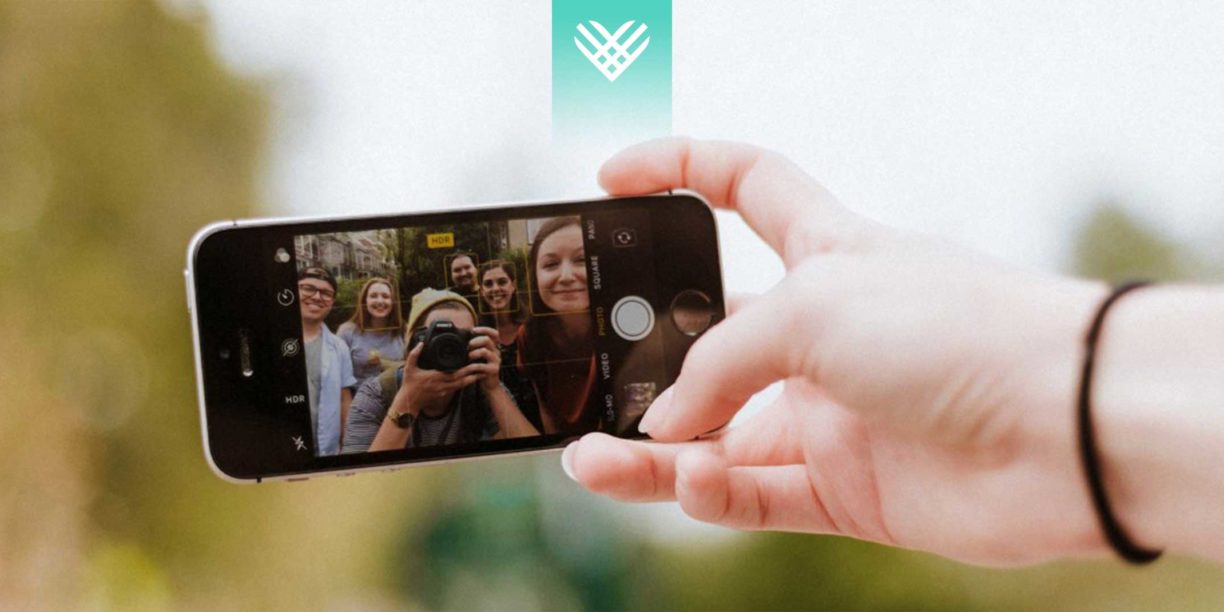
For first timers, Giving Tuesday can be a goldmine of new donors, engagement opportunities, and revenue. Following your first Giving Tuesday campaign, you have an opportunity to build off the momentum of the prior year.
When it comes to revenue, specifically, it’s a question of how you can increase year over year. What specific tactics can you use leading up to, and on the day of, Giving Tuesday?
To find out, we spoke with Huan Song, brand manager, and Olivia Gauvin, donor engagement manager, from All Hands and Hearts (AHAH). AHAH increased their day-of Giving Tuesday revenue on Classy by 263% from 2017 to 2018, with their total donation growing from $25,122 to $91,202 year over year.
Huan and Olivia let us in on the major key to their success: sourcing user-generated content and leveraging it in hyper-segmented email marketing efforts. This radical shift in their marketing perspective was a game changer for their organization, but what gave them the idea to start this in the first place?
Why Focus on User-Generated Content?
Before Giving Tuesday 2018, the AHAH team read New Power for their team book club. What stood out to them was a concept introduced by the book about “new power.”
Essentially, it’s a way to spread messages, stories, or experiences by leveraging the power of the people. And it’s a shift away from the “old power” way of sharing this content, like top-down broadcasting models.
This mindset is inherently peer-to-peer in nature, as people tend to share with their direct networks, who then share with their networks. And much like a peer-to-peer fundraising campaign, which gives supporters a sense of ownership over your cause, this new power model gives supporters ownership of your story as they relay their personal experiences with your brand.
AHAH began brainstorming for Giving Tuesday in July, so they were far enough ahead of the curve to get creative with how they could apply this new power mindset.
Free Download: Your Giving Tuesday Master Checklist
Playing off the shared ownership angle, they had all campaign branding—down to hashtag—use the word “I” or “me” in it. Thus, the “I Build the Future” campaign was born.
I Build the Future
“With ‘I Build the Future,’ we wanted people to join in on a shared ideal for the future by detailing their experiences volunteering with us.
Volunteers with AHAH work in very hands-on and engaging disaster relief work. Being on the front lines presents an opportunity for them to talk about their experiences and share stories about how the AHAH brand, mission, and work resonates with them. For example, Huan tells us it’s always a powerful moment for volunteers when they first arrive on-site, after a hard day’s work, or meeting homeowners affected by a disaster.
Even if your nonprofit doesn’t work with volunteers often, it’s still possible to tap into your community and source user-generated content. Think about the different ways you can give supporters a sense of ownership or how they’re already doing it on their own. For example, does your nonprofit:
- Have active social media users that share your content?
- Send email newsletters that feature supporters and their experiences?
- Invite people to share their stories with the rest of your community?
These are all potential avenues that can lead to engaging user-generated content. And if these specific ideas don’t apply to your nonprofit, use them as a jumping off point for the ways you do interact with your supporters. The main learning to take away is that this content can be found in a variety of places.
User-Generated Content Is Everywhere
For AHAH, the user-generated content efforts began when they started casually re-sharing people’s Instagram stories on their account. The feedback was overwhelmingly positive, as their followers loved seeing their posts re-shared.
For Giving Tuesday, the key was to get the user-generated content tied directly to “I Build the Future” and then discover which pieces of content were the most engaged with. To do this, AHAH monitors and responds to every message across their social media channels.
This strategy has continued to evolve and now the team now runs a weekly report on their other digital marketing channels aside from social media, like email. Additionally, they use tracking links and keep a close eye on Google Analytics to find out what people are engaging with and where they were coming from.
In one case, they found they were getting heavy referral traffic from a travel blogger’s site. It was doing far more than just sending people their way: it was converting visitors into volunteers.
“This was actual people who found, filled out, and submitted our application to volunteer. As it turns out, this travel blogger was volunteering with us and wrote posts about the everyday experience. People loved it, they commented on it, and it was so compelling they came to our site to sign up to volunteer themselves.
There were other sources of organic content as well, like a FastCo employee who volunteered and wrote an entire content series about his AHAH experience. There were also artistic pieces created, like this mural, which was drawn by a local artist:
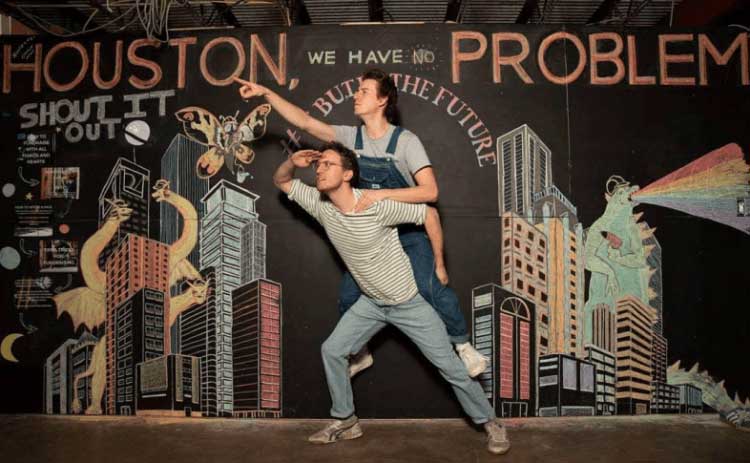
Once your team has compiled all of this content, the next step is putting it to use.
Implementing the Content Strategy
Building and executing a strategy fueled by user-generated content isn’t a one person job—it’s a cross-departmental effort. In addition to the weekly channel report, AHAH also creates a user-generated content report to plan how they’ll put the different stories to use.
For example, if they were lacking in videos, AHAH would source and use more user-generated videos off their channels. And for Giving Tuesday specifically, AHAH put their user-generated content around “I Build the Future” to work through their emails. And in order to get it in front of the right people to drive action, they hyper-segmented their email lists.
Giving Tuesday Email Segmentation
To prepare for their Giving Tuesday outreach, the development team spent about 80% of their time building out what Huan calls “micro-segments” of their audience. These segments include groups like:
- Individuals who have made more than two gifts in the past year between a certain dollar amount
- Historical Giving Tuesday donors from the past year
- Historical Giving Tuesday donors from the past five years
- Donors to specific programs
- Individuals who gave over a certain amount in the past year
These are only a few of the many micro-segments AHAH created for their Giving Tuesday email marketing. For each one, they sent targeted content and appeals that aligned with the segment’s level of engagement or specific interests.
For example, they made a specific recurring giving appeal that went to a segment labeled “recurring prospects.” Within this segment were:
- Former recurring donors
- Individuals who made two or more gifts in FY18, $5-$499
- Individuals who made one gift in FY18, $5-$499
- Individuals who made two or more gifts in FY19, $5-$499
Inside the email was a link to a video, text that explained the impact from making a monthly commitment, and a button to donate monthly. Additionally, they tailored the recurring ask amount based on an individual’s previous giving history:
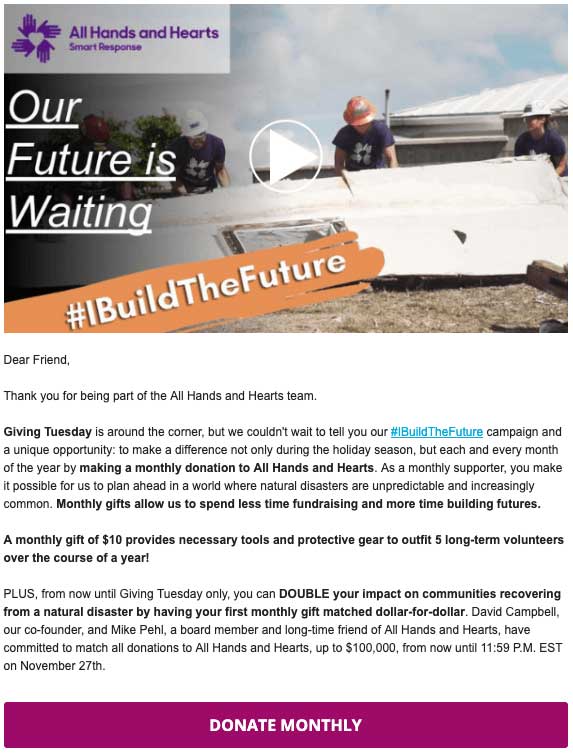
Almost all of their emails included user-generated content in some form or another:
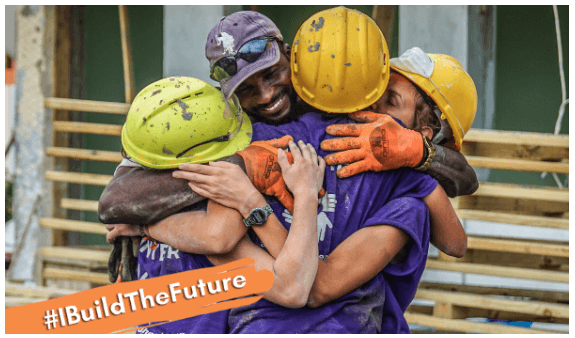
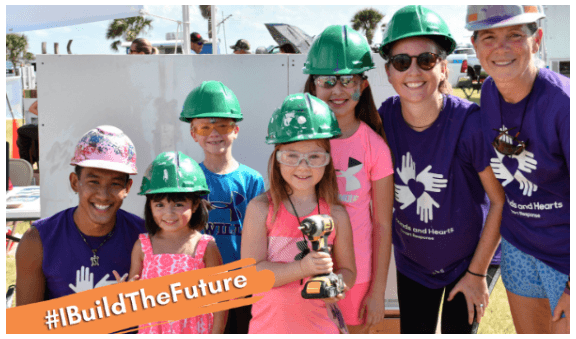
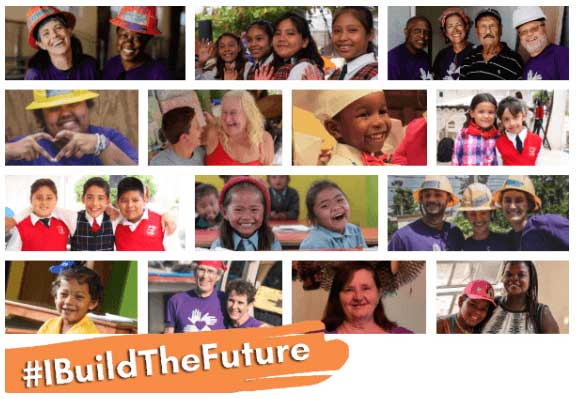
There were also a number of other takeaways Olivia and the AHAH team had that your nonprofit can put into use. Here are a few of them:
Subject Lines
After substantial A/B testing and analyzing open rates for different email sends, AHAH found that subject lines that were more emotional performed better than straightforward subject lines.
Shifting Asks
While they made a specific recurring ask for some segments, they switched to a one-time ask closer to Giving Tuesday. This helped to ensure they didn’t miss out on any one-time gifts from people who weren’t interested in monthly giving.
On the day before Giving Tuesday, the monthly giving emails only went to people who had opened previous monthly giving asks. On Giving Tuesday, all asks were for one-time gifts.
Email Overlap
As part of their segmentation process, they made sure people weren’t receiving more than one version of a day’s email, and that people who had already donated for Giving Tuesday weren’t being asked again. This was helpful for people they felt shouldn’t be receiving duplicate asks, like monthly donors or those who had made large gifts.
What started as a book club discussion turned into a stellar fundraising strategy. AHAH gave their supporters ownership of the story, built a branded campaign with “I Build the Future,” and fueled their own messages with those of their supporters.
This a twofold strategy—featuring user-generated content paired with hyper-detailed email segmentation—not only increased their Giving Tuesday revenue year over year, but is also something they now use year-round to drive fundraising results.
If you’re ready to rock your own Giving Tuesday campaign, make sure to visit our resource library below and equip your organization with the tools needed to succeed.
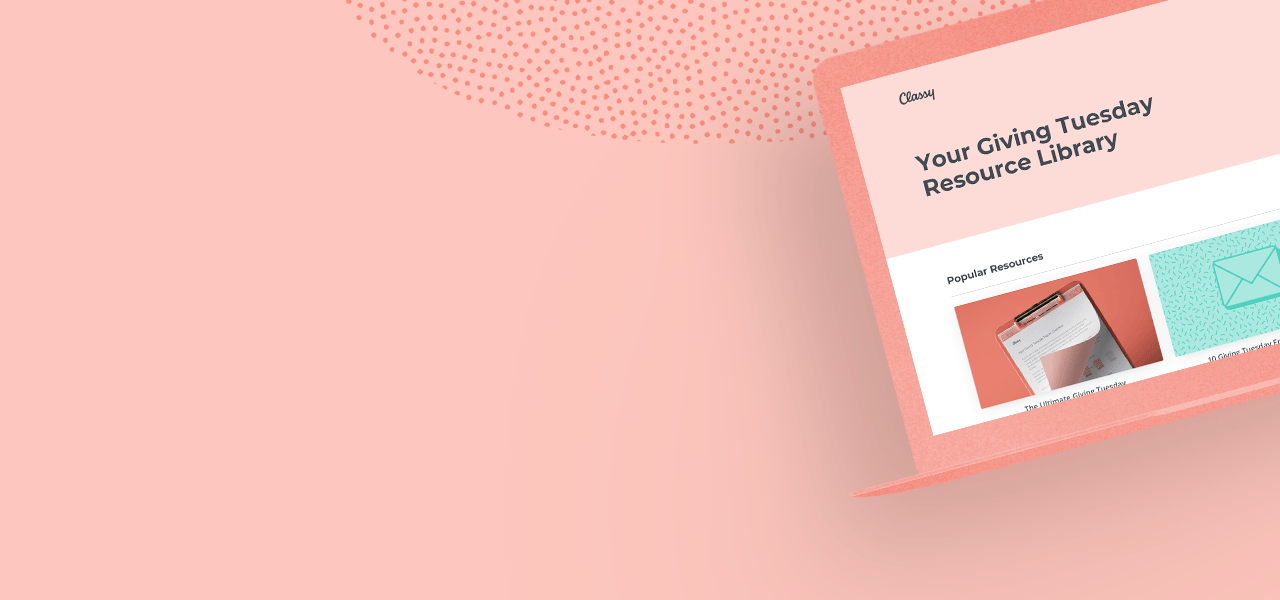
Giving Tuesday Resource Center



